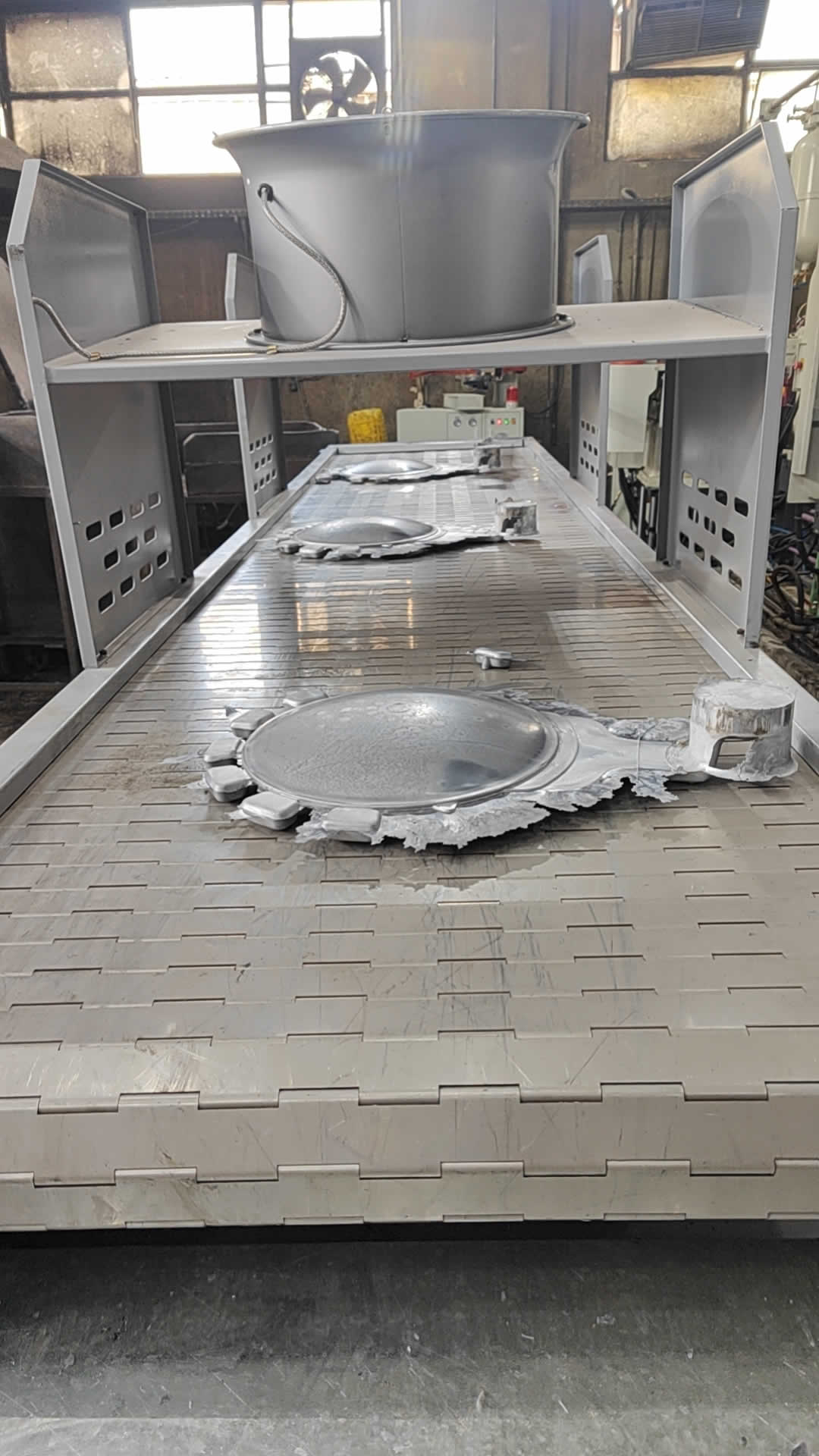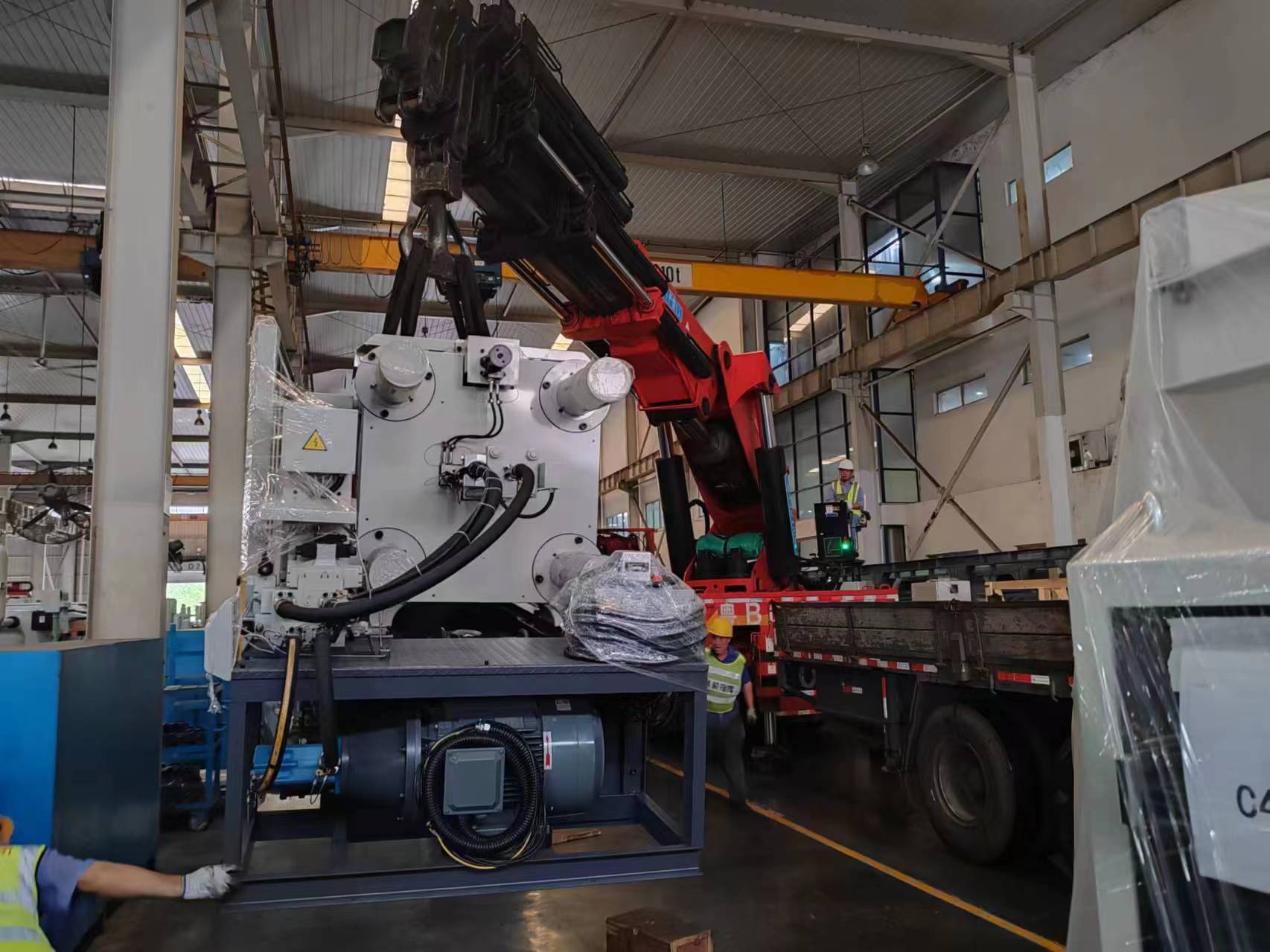Aluminum Die Casting
LK Die Casting Machine / 2024-07-19 16:13:17
2024-07-19 By Cherry
Aluminum casting die casting is a manufacturing process widely used in various industrial fields, especially in the automotive, electronics, and
construction industries.

Overview of Aluminum Die Casting Process
Aluminum die casting is a manufacturing process that injects molten aluminum alloy into the mold cavity under high pressure and quickly cools
and forms it. This process is suitable for large-scale production of parts with complex shapes and high precision.
Casting Process
The aluminum die casting process includes the following main steps:
1. Melting: The aluminum alloy is heated in a furnace to a molten state.
2. Injection: The molten aluminum alloy is injected into the mold cavity through the high-pressure plunger of the die casting machine.
3. Cooling: The molten aluminum alloy is rapidly cooled and solidified in the mold.
4. Removal: Open the mold and remove the molded casting.
5. Finishing: Deburring, cleaning, and surface treatment of castings.
Aluminium materials density
Die cast aluminum or diecast aluminum material density is 2.7 g/cm³, which is lower than that of steel (about 7.85 g/cm³), which makes aluminum alloys have significant advantages
in weight reduction applications.
Common aluminum alloys of diecast metal and their applications
Aluminum alloys are a general term for aluminum-based alloys, and other elements such as copper, magnesium, zinc, etc. are added to improve their mechanical
properties and corrosion resistance.

Common aluminum alloys are:
1. A380 aluminum alloy
A380 aluminum alloy is one of the most commonly used die-casting aluminum alloys.
It has good casting properties, high strength, and corrosion resistance, and is widely used in automotive parts, electronic product housings, etc.
2. EN AC-46000 aluminum alloy
EN AC-46000 is an aluminum alloy containing silicon and magnesium. It has good fluidity and mechanical properties and is often used to manufacture
complex-shaped castings, such as engine parts and power tool housings.
Recycled aluminum
Recycled aluminum is an aluminum alloy obtained by remelting recycled aluminum waste. Recycled aluminum not only saves resources but also greatly
reduces energy consumption and environmental pollution. The process of recycling aluminum includes collection, sorting, cleaning, melting, and casting.
Application examples of aluminum die casting
1. Electric vehicle castings
Electric vehicle castings are an important application field of aluminum die casting. Aluminum alloys are ideal materials for manufacturing electric
vehicle battery housings, motor housings, and structural parts due to their lightweight, high strength, and good conductivity.
Well-known battery manufacturers such as Forest Lake Battery also use aluminum die casting technology in the manufacture of electric vehicle battery
housings.
2. Electronic product housings
Aluminum die castings are widely used in electronic products, such as mobile phones, laptops, tablet computers, and other housings.
These aluminum alloy housings are not only light and durable but also have good heat dissipation performance and electromagnetic shielding effects.
3. Construction industry
Aluminum alloy doors, windows, curtain walls, and structural parts in the construction industry are often manufactured using aluminum die casting.
Aluminum alloy materials have excellent corrosion resistance and aesthetics and are suitable for various construction applications.
Aluminum corrosion and its protection
Aluminum alloys will corrode in the atmosphere, seawater, and certain chemical environments. Common types of aluminum corrosion include pitting, crevice
corrosion and intergranular corrosion. In order to improve the corrosion resistance of aluminum die castings, the following protective measures are often used:
Surface treatment
Through surface treatment methods such as anodizing, coating, and electroplating, a protective layer can be formed on the surface of aluminum alloy to improve
its corrosion resistance and aesthetics.
Nickel color and chrome plating or chrome finish are common electroplating treatment methods.
Alloy addition
Adding appropriate amounts of magnesium, zinc, copper and other elements to the aluminum alloy can significantly improve its corrosion resistance.
For example, aluminum-zinc or aluminum-magnesium alloy with high zamak zinc density or magnesium density has excellent corrosion resistance.
Recyclability of aluminum and its environmental impact
Is aluminum recyclable?
Aluminum is one of the most easily recycled metals. The recycling process of aluminum is simple and efficient, and waste aluminum can be melted and
recast into new aluminum products. The recycling rate of aluminum is as high as 95%, and the performance of recycled aluminum is basically the same as
that of primary aluminum.
Benefits of recycled aluminum
Recycled aluminum has significant environmental and economic benefits:
1. Energy saving: The energy consumption of producing recycled aluminum is only 5% of that of primary aluminum.
2. Emission reduction: The carbon dioxide emissions in the production process of recycled aluminum are greatly reduced.
3. Resource conservation: Recycled aluminum reduces dependence on aluminum ore resources and protects natural resources.
Aluminum can recycling near me
In order to promote the recycling of aluminum, many cities and communities have set up aluminum can recycling sites.
By checking the local waste recycling points, you can easily find the nearby aluminum can recycling station and send the discarded aluminum cans for
recycling.
Zinc alloy and its application
Zinc alloy is another metal material commonly used in die casting, with excellent casting performance and mechanical properties. The density of zinc
alloy is 7.14 g/cm³, which is higher than that of aluminum alloy and is suitable for manufacturing small precision parts.
1. Characteristics of zinc alloy
a. Low melting point: Zinc alloy has a low melting point of about 380-420°C, which is suitable for the hot chamber die casting process.
b. High precision: Zinc alloy die castings have high dimensional accuracy and surface finish, which are suitable for manufacturing parts with complex shapes.
c. Corrosion resistance: Zinc alloy has good corrosion resistance and is suitable for humid and corrosive environments.
2. Application of alloys with zinc
Alloys with zinc are widely used in electronic product housings, automotive parts, toys, and decorations. Its excellent casting and mechanical properties make
it is an ideal material for small precision parts.
Advantages of aluminum die casting
1. High production efficiency
The aluminum die casting process can realize large-scale automated production, and can produce hundreds to thousands of castings per hour, with extremely
high production efficiency.
2. Good product quality
Aluminum die castings have high dimensional accuracy, good surface finish, and stable mechanical properties, which reduces the workload of subsequent
processing and finishing.
3. High material utilization rate
The aluminum die casting process has a high material utilization rate, and less waste, and aluminum waste can be recycled and reused, which reduces production
costs and environmental burden.
Conclusion
Aluminum die casting is an efficient and high-quality manufacturing process, that is widely used in automobiles, electronics, construction, and other
fields. Aluminum alloy materials have the advantages of lightweight, high-strength, and corrosion resistance. The use of recycled aluminum not only
saves resources, but also has significant environmental benefits. Zinc alloy also occupies an important position in the manufacture of small-precision
parts due to its excellent casting and mechanical properties.
By understanding the process flow, material properties, and application examples of aluminum die casting, this process can be better applied to provide
reliable technical support for the production and manufacturing of various industries.
For more info, you can refer to: https://www.youtube.com/shorts/JLX410QV_kw
Contact LK Egypt to learn more info about the die-casting machine
LKAGENT OFFICE DCM
Address: Industry Zone, South of Port Said Kebly, Egypt
https://www.zazdiecasting.com/
Phone/WhatsApp/Wechat: +86 13598704163
Mobile: +20 101 304 3317 +20 150 181 8310
Email: jack@zazmae.com ahmedmahmoud@zazmae.com
#die cast tooling
#trivalent chromate
#rapid prototype casting
#a360 aluminum
#aluminum caster
#aluminum prototype
#ideal 55 slider parts
#density of aluminum kg/mm3
#magnesium sheet metal
#parts of a metal gate
#subcontracting of screw machining for the luxury sector
#wall aluminum
#die casting tooling
#tooling for die casting
#density of aluminium in kg mm3
#clear chromate
#es casting metals
#gating material
#prototype aluminum
#sigma castings
#subcontracting of screw-machining for household appliances
#we squeeze to please machine
#aluminium gravity die casting
#aluminum part
#aluminum rapid prototyping
#nickel casting
#plunger tip for die casting machine
#rapid prototyping aluminium
OTHER CONTENT
-

2024-09-19 14:16:15 LK Cold Chamber Die Casting Machine DCC900 Locking Force: 9000KN Die Height: 400-1000mm Space Between Tie Bars: 930x930mm Shot Weight: 13.5Kg Casting Area Max:2250c㎡
More -

2024-09-19 14:11:06 LK Cold Chamber Die Casting Machine DCC280 Locking Force: 2800KN Die Height: 250-650mm Space Between Tie Bars: 560x560mm Shot Weight: 2.9Kg Casting Area Max:700c㎡
More -

2024-09-19 10:23:07 LK Cold Chamber Die Casting Machine DCC580 Locking Force: 5000KN Die Heigh: 350-850mm Space Between Tie Bars: 760x760mm Shot Weight: 6.9Kg Casting Area Max:1250c㎡
More -

2024-09-19 10:11:20 LK Cold Chamber Die Casting Machine DCC400 Locking Force: 4000KN Die Height: 300-700mm Space Between Tie Bars: 669x669mm Shot Weight: 4.7Kg Casting Area Max:1000c㎡
More

